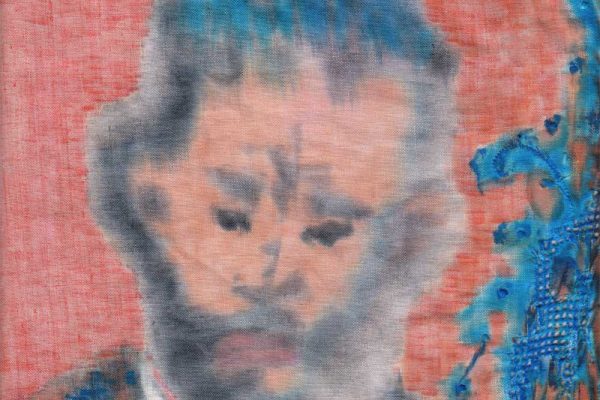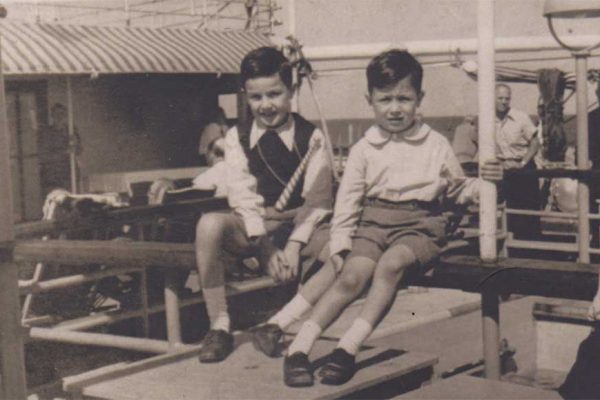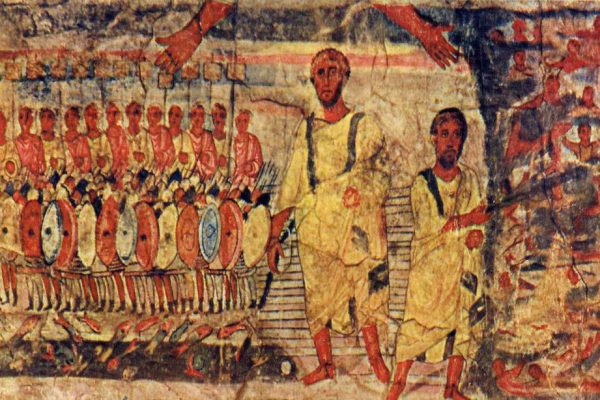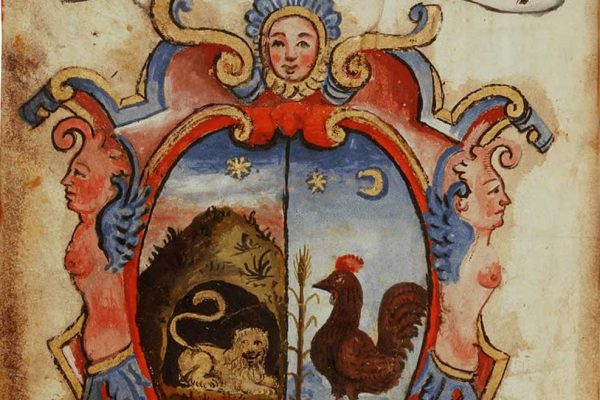Bound in Venice. The First Talmud
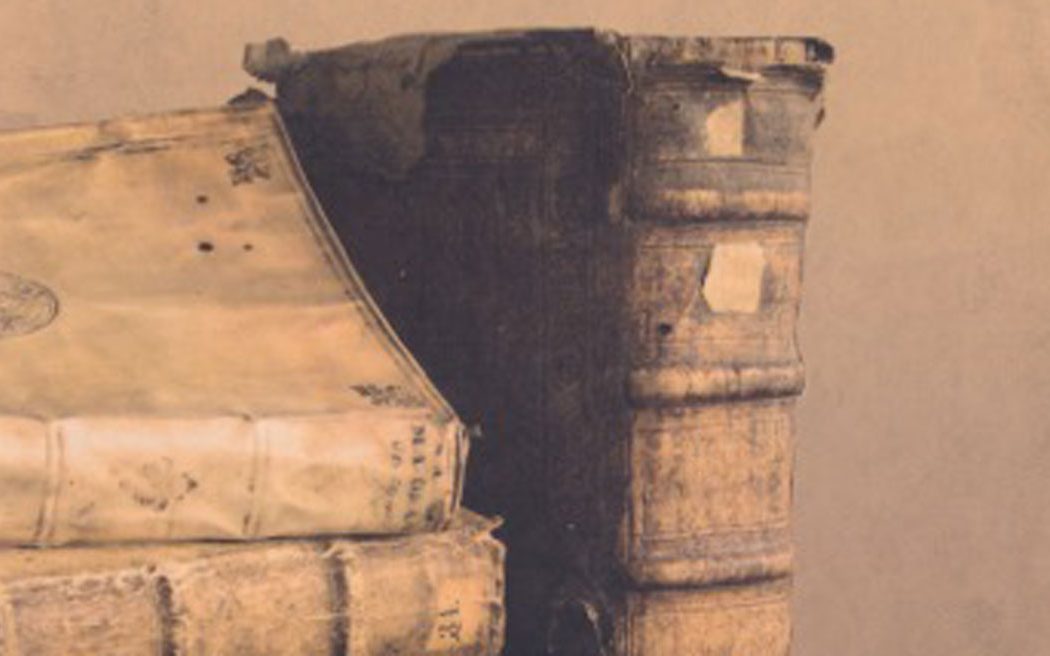
Bound in Venice: The Serene Republic and the Dawn of the Book, Europa Editions 2013
A history of the dawn of the book coming at a time when both books and reading are threatened.
The First Talmud
Take a Fleming, a German, and a Tunisian, bring each of them to Venice, put them together, and you’ll have assembled the greatest concentration of Hebrew book-trade expertise in the first half of the sixteenth century. The encounter of these three minds, so different with respect to geographic and religious origins (a Christian, a converted Jew, and a practicing Jew), made the Serene Republic not only the capital of publishing in general but also the indisputable capital of Hebrew publishing.
But in order to understand how it came about that the first printed rabbinical Bible and the first printed Talmud were produced in Venice, it is necessary to understand the long relationship— complicated and discordant, but nonetheless productive— between the Venetian Republic and the Jews.
The world’s first Jewish ghetto was “seraglio of the Judeans” instituted on March 29, 1516, in Venice, in the parish of Saint Jerome, in the Cannaregio district. But the Jewish presence in the lagoons dates back to long before that. It seems—though it has not been proved—that Giudecca, an island to the south of Venice, owes its name to the presence of at least one synagogue there in the thirteenth century. It is certain, on the other hand, that the necessity of using a boat to move around the city gave rise to a rabbinical dispute that couldn’t be more Venetian: whether or not it is licit to take a gondola on the Sabbath. The seventeenth century dispute made reference to a precedent from 1244, when Rabbi Isaia da Trani had navigated through the canals of Venice on the day when labor of any kind is not permitted. Four centuries later, Rabbi Simone Luzzatto submits that it is licit to use a gondola on the Sabbath, basing his position on the case of Isaia da Trani, but the council of the community rejects his argument on grounds that it is too modernist and venturesome.[1]
In any event, Jews were not allowed to live in the Dominant (as the city was called by Venetians back in the days when it was a capital), but only on the mainland. After 1492, when Ferdinand and Isabelle expel the Jews from the Iberian Peninsula, many of them find refuge in the Venetian state, a relatively tranquil land of asylum. The turning point comes after the Venetians’ defeat at Agnadello, in Lombardy (May 14, 1509), when the Serene Republic risks being erased from the map by a coalition of all the major powers of the age untied against it. The Jews flee from the mainland occupied by the imperial and French forces, and large numbers of them take refuge in the Dominant, protected by the safe waters of the lagoon. They take up residence just about everywhere in the city, but fear that their ever more visible presence might provoke resentment, and they ask to be put all together in a safe place. In her study of Venice’s relations with the Middle East, Maria Pia Pedani writes, “The model of a separate neighborhood for people of a different nationality and religion had been developed in some Islamic areas and was not considered in a negative way but rather as an element of greater safety for those who lived there.”[2]
In Constantinople, for example, Genoese Christians live isolated—and under surveillance—in the Galata quarter. Even the Venetian fondacos, like the one created in the sixteenth century for the Germanic nation, were modeled on structures where Christian merchants customarily lived in Islamic territories.[3] Actually, the Fondaco dei Tedeschi existed as early as the thirteenth century; it was the Fondaco dei Turchi (for Turkish merchants) that was instituted in the sixteenth century.
The idea of the ghetto, therefore, is an additional refinement to a system that was already well known. The difference—and it’s certainly not secondary—is that while the Jews ask to be isolated, they are in fact segregated. In the spring of 1516 the Serene Signory sends the Jews to live in an area completely surrounded by canals and thus easily closed at night, an area previously occupied by foundries for cannons, where the metal for the cannons was gettata (cast). Pronounced by German Jews (the first settlers were Ashkenazy) with a hard “g,” the Italian getto, pronounced jetto, becomes ghetto. This is the most accredited etymology of the word destined to become so sadly famous.
As often happens, negative events also have positive outcomes: the Venetian Jews are granted permission to build themselves a place of worship. And in order to pray they need books, and so it is that an event as dire as the birth of history’s first ghetto has as an immediate consequence: the flowering of a clamorously successful Hebrew publishing business, which spreads from Venice throughout Europe and the Mediterranean. Venice keeps its Jews locked up [. . .] But “the seraglio of the Judeans,” symbol of discrimination and segregation [. . .] managed to keep alive and transmit to future generations the entire ethical and cultural heritage which has always distinguished Judaism down through the centuries [. . .] The book [. . .] became, from the earliest tormented years, an essential element of survival for every community.[4]
Among all the large communities of foreigners present in Venice—Greeks, Armenians, Dalmatians, and Jews—visible traces of which remain in the urban fabric of the city today, only the Jewish community has profoundly influenced and modified Venetian society. To be sure, there have been highs and lows in the centuries-old relationship between Venice and its Jews. The periodic reiteration of the requirement to wear a yellow cap indicates that in some periods this imposition was not respected. During the wars against the Turks, the Jews were subjected to harsh crackdowns because they were considered (wrongly) fifth columnists of the Ottoman Empire.
This happened particularly during the war over Cyprus, which started during the Battle of Lepanto (October 7, 1571), and ended with Venice losing that large Mediterranean island. That war had been supported, promoted, and fomented by a singular figure, Joseph Nasi, a wealthy Portuguese Jew who, after having passed through Venice and then establishing himself in Constantinople, became an advisor to Sultan Selim II, and vented his hatred for Venice by helping to unleash the full force of the Ottoman Empire against it.
But there are also times when relations between Jews and Christians are good. In the first half of the seventeenth century, Leone da Modena, perhaps the most important Rabbi of Venetian Judaism, attracts many non-Jews to listen to his sermons.
A man of his time, he loves gambling and the pleasures of Venus, and so he suffers from no lack of occasions for spending time with Christians. His student Sara Copio Sullam, the “poetess of the ghetto,” starts one of the most famous salons in Venice, frequented by Jews and Gentiles, clerics included. The Jews are the first to celebrate the exhilarating victories of Francesco Morosini in Morea (the Peloponnesus) during the war against the Turks in 1684-1699, with enormous demonstrations held in the campo of the Ghetto Nuovo. It is customary for erudite Jews to be called on to compose verses for weddings between members of illustrious patrician families.
Social and cultural interactions of this kind are unknown elsewhere, except perhaps in Vienna at the beginning of the twentieth century.
This rarefied atmosphere of sixteenth century Venice is the setting for William Shakespeare’s The Merchant of Venice. The drama of Shylock and Bassanio could not have taken place anywhere else, since Jews were not usually so well woven into the social fabric. As Riccardo Calimani points out in his study of the ghetto, “Shylock, the most celebrated Venetian Jew, never existed. Nevertheless, in his play William Shakespeare transformed him into an elusively symbolic figure portrayed in tragic, painful, even ruthless hues [. . .]. Shylock, an imaginary but plausible figure of flesh and blood, hate and vengeance, is extraordinarily modern.”[5] He is a symbol.
Inside the ghetto, there is a differentiation among the various components of Venetian Judaism, with “pledge loans being the domain of the German ‘nation,’ and the prosperous maritime trade run by a nucleus of Sephardic families.”[6] Moreover, it is the “Germans” who reactivate religious practice, creating an “incentive toward a cultural and scientific development within the confines of tradition.”[7]
This is the context that gives rise to the Hebrew publishing business, which—contrary to what happened elsewhere—is not run by Jewish publishers because the Serene Republic prohibited Jews from publishing books. In the exhilarating years of the boom in Venetian publishing, which soon brings the city “to the apex of European Hebrew publishing,”[8] there is only one important Jewish publisher, Meir Parenzo. Despite repeated attempts, the man who has been called “the greatest Jewish printer of all time,”[9] Gershon Soncino, will never make it to Venice. He will, however, settle for some time inside the Venetian state, in Brescia, where in 1494 he will print a Bible destined to have an enormous role in history, the so-called Berlin Bible, the one used by Martin Luther to create his German translation that will pave the way for the Reformation.
The first to print Hebrew texts in Venice is a Christian from Antwerp, Daniel Bomberg, who will also be the first in the world to publish the Rabbinical Bible and the Talmud. Not that he is welcomed with open arms; he has to struggle to obtain government permission to print in Hebrew and his applications, accompanied by growing offers of money, are rejected again and again. Only on his fifth attempt, and after shelling out some 500 ducats, is he granted a ten-year privilege.
Obviously, there is a golden barrier beyond which the religious scruples of the patricians are unable to go and, just as obviously, if Bomberg can afford to spend such a large amount, it means that he expects a considerable return on his investment.[10]
In 1515 he sets up a print shop, availing himself of the collaboration of a Jew-turned-friar, Felice da Prato, who makes a request to the Venetian government “to take on as assistants ‘four well-instructed Jewish men,’ perhaps of foreign provenance, who might enjoy the privilege of donning a black cap.”[11]
The Fleming’s arrival in the lagoon is part of the great migratory flow of printers descending from the German-speaking world to Italy, and another German immigrant, Cornelius Adelkind—before his conversion,[12] Israel ben Baruk—will edit the debut edition of the Talmud.
The first works printed by Bomberg have been lost; they probably did not survive the book burnings of the Inquisition. In 1517 he releases the first edition of the Rabbinical Bible, which also contains the Aramaic tradition and commentary by celebrated Medieval Hebrew exegetes:[13]
It was edited by the Jewish convert Felice da Prato and dedicated to Pope Leo X. Because of the identity of the editor and the dedication, the Jews refused to recognize the edition and began numbering the Rabbinical Bibles [. . .] from the next one to appear, again in four volumes and again in folio, in 1524-25, completely renewed and edited by Yaaqov ben Chayyim, a Jew originally from Tunis.[14]
It is fairly evident that these first examples of printing in Hebrew were not intended primarily for Jews but for Hebrew scholars, whether Jews or Christians. The dedication to Leo X indicates that the readers of Hebrew books were not exclusively Jews, and that interest in Jewish culture was widespread in humanist and religious circles. [15] There is no doubt that the boom in Hebrew publishing is also the result of genuine literary interest on the part of figures extraneous to Judaism[16] who wished to know in their original forms that were fundamental to the development Western culture.
In any event, Chayyim, an expert philologist, takes a different route from that traveled by his convert predecessor, one well grounded in tradition, and undertakes a thorough study of manuscripts. His edition of the Rabbinical Bible is destined to remain the key reference point for four centuries, at least until the Hebrew Bible is printed in Leipzig in 1913, it is the most widely distributed in the European theological faculties, especially the Protestant ones:[17]
Whether for the composition of their texts or for the financial investment in their production, the Rabbinical Bibles must be considered among the most important editions printed by Bomberg.[18]
While working on the Rabbinical Bibles, the publisher also has the Talmud in mind. Its publication is supervised by Cornelius Adelkind, who edits the edition of the Babylonian Talmud, which is printed in twelve volumes between 1520 and 1523, while the four volumes of the Jerusalem Talmud roll off the presses between 1522 and 1523. In this case too, Bomberg’s edition is memorable “not only for its philological accuracy and the beauty of its characters, but for the layout of its pages”;[19] it is destined to serve as a model for subsequent editions.[20]
In this brief span of years, the Flemish printer in Venice puts out the first editions of some of Judaism’s most fundamental works. But his business is much broader—he works on commission for “numerous communities of the Diaspora of the time: in Rome, Spain, Germany, and Greece, and as far away as Aleppo in Syria.”[21] A perfectly conserved copy of the twelve volumes of Bomber’s Talmud has been put up for sale by Sotheby’s, along with another thirteen thousand rare Hebrew books, at an asking price of 40 million dollars. They are the volumes of the Val madonna Trust Library, an unmatchable collection assembled over a period of sixty years by Jack Lunzer, Count of Val madonna.
This gentleman, who was born in Antwerp to an English father in 1924 and moved to London as a child, became one of the most important international traders of industrial diamonds. In the 1950s he begins collecting Hebrew books. In 1956 he learns that Westminster Abbey conserves, substantially forgotten, the Babylonian Talmud printed by Bomberg. It is a copy commissioned by Henry VIII to assist him in evaluating whether he should convert to Judaism to obtain a divorce. But when the twelve volumes arrive in London, years later, the sovereign has already founded the Church of England and no longer has any use for them. He has already paid for them, however, and so he sends them to the Abbey where they sleep for several centuries. Lunzer enters into possession of them twenty-five years later, in the 1970s, thanks to a trade: he “donates” a nine-centuries-old copy of the charter of Westminster Abbey in exchange for the Venetian Talmud. His nephew recounts that the curator of the Abbey’s library, having heard that the charter had been put on the market, greeted the collector saying, “Mr. Lunzer, we’ve been expecting you.”[22]
But let’s return to the sixteenth century, when another important figure makes his entrance into Bomberg’s shop, he too is a German, Eliyyah ben Asher ha-Levi Askenazi, better known as Elia Levita, who from 1528 to 1549 (with an interruption of four years) works in the printing shop as “advisor, editor, and proofreader.”[23] Levita flees Rome in 1527, when, during the sack of the Eternal City carried out by the Lansquenets, he loses “all of his properties, books and manuscripts, and escapes death with his family by seeking refuge in Venice where he will earn a living as a proofreader in Bomberg’s printing shop and as a Hebrew teacher for several highly placed Christians.”[24]
Elia Levita will lend his name to the first published comprehensive grammar of the Hebrew language. Actually, there had already been several previous attempts, even illustrious ones, to print Hebrew grammars, such as the Introductio per brevis Hebraicum linguam, almost certainly composed by Gershon Soncino, printed by Aldus Manutius starting in 1501-02 as an appendix to Greek and Latin grammars. [25] The Massoret ha-Massoret, “a true and proper classic of Hebrew culture,” [26] is put into print by Elia Levita in 1538. The scholar is the first to establish that the dots used to indicate vowels are not as ancient as the Hebrew alphabet, as was then commonly believed, but an innovation introduced only in the fifth century of the Christian era. For this reason, he has Bomberg print on the inside of the grammar a little hand with a pointing index finger which, as explained in the introduction, is a way of saying, “Look, this is something new.”[27] Levita is enthusiastic in describing his employer, calling him “a master printer, an artist without equal in Israel,” [28] and he remains indissolubly tied to him, notwithstanding his own success in becoming the Hebrew teacher for two cardinals: first Egidio da Viterbo and then Domenico Grimani. The second, a Venetian patrician, plays a fundamental role in the history of the book: he has handed down to us what can be considered to the publishing field what the Sistine Chapel is to frescoes: the Grimani Breviary. The Breviary is a codex of 832 pages, all decorated, and fifty full29 page miniatures painted by Flemish artists. It is certain that the cardinal was its owner in 1520, now the codex of wonders is conserved in the Biblioteca Marciana in Venice.
“The Aldus of Hebrew Books”—as Bomberg came to be called with a clear reference to Manutius, who was already recognized as the greatest of the great—prints more than 180 works in his thirty-two years of activity between 1516 and 1548. He uses excellent-quality paper, with a filigree of an anchor inscribed in a circle crowned by a star, paper yellowed by time but still robust and substantial. David Amran in his study of Hebrew book printing in Italy attests to the quality of the paper when he writes: The censors of the Church inked pages in thousands of volumes, but the paper showed itself to be more durable than the ink because the ink has faded while the printed words once cancelled out are now legible again; proof that Domenico Gerosolimitano, Fra’ Luigi da Bologna, and Giovanni Domenico Carretto (three of the most zealous censors) lived and inked in vain. [29]
In reality, things don’t always work out that way: in the Mishne Torà printed by Bomberg in 1525 and conserved in the Renato Maestro Library of the Jewish Community in Venice, numerous pages have lines blacked out by the censors. In some cases, the canceled words are indeed newly legible beneath the time-faded ink, but in others the ink has ruined the paper, putting holes in the pages (the volume has a dedication in Spanish, calling it a precious book all over the world and the most precious in all of Italy: “Este es un precioso libro que aj en el mundo [. . .] mas precioso libro en toda Italia”). It is not known exactly why the Flemish publisher retired from the business. His son David keeps publishing for some time but then the characters are sold to other printers. The next figure to follow in his footsteps is Marco Antonio Giustiniani, a Venetian patrician who establishes a printing house at the Rialto, in Calle dei Cinque. He stays in business for seven years, from 1545 to 1552, and, using the Temple of Jerusalem, as his emblem publishes eighty-six editions. The quality is first rate thanks to his hiring of some of Bomberg’s collaborators and his use of characters engraved for him by the most celebrated punch-maker of the time, the Frenchman Guillaume Le Bé, who arrived in Venice in 1545. [30] Le Bé also supplies characters to the only Jewish printer working in those years, Meir Parenzo. Formerly one of Bomberg’s proofreaders, Parenzo, using the menorah as his symbol, publishes books on various subjects between 1545 and 1549.
By now we are at the beginning of the end, which arrives on the heels of a dispute—first commercial but then doctrinal— between Giustiniani and another publisher, he too a Christian patrician, Alvise Bragadin (like Bomberg, Bragadin works for the international market and he prints pocket-size prayer books for the Sephardic communities).[31]
The Bragadin printing house makes its debut with an edition of the Mishne Torà, by Mosé Maimonide, with commentary by Meir Katzenellenbogen, a German Rabbi who had studied in Prague, and a representative of the Paduan anti-cabalists. At almost the same time and in competition with Bragadin, Giustiniani prints the same codex, obviously without Rabbi Katzenellenbogen’s commentary. At this point, Bragadin and Giustiniani lock horns in a furious squabble that soon degenerates into an all out war.[32] The former accuses the latter of unfair trade practices in the printing of the Talmud. The rabbi from Prague gets involved in the dispute and calls for help from the highest authorities of the time. Rabbi Moses Isser less from Krakow, after a careful investigation, threatens to ex-communicate all those who had purchased the edition printed by Giustiniani. The first round goes to Bragadin, but his opponent won’t take it lying down and appeals to the papal authorities to condemn Bragadin’s edition, hoping to get rid of the competition once and for all. If he’d had any idea of the consequences that this move would provoke—shutting down the presses, suspending Hebrew publishing in Venice for the next ten years, and the end of Venice’s hegemony in this sector—he almost certainly would have thought better of it.
Things in Rome were changing. The Florentine Pope, Leo X, a member of the Medici family, son of Lorenzo the Magnificent, student of Poliziano, refined and cultivated humanist, protector of Michelangelo, Raffaello, Ariosto, and Machiavelli, with his thoroughly Renaissance interest in Jewish culture, dies in 1521. The Inquisition is now headed by the doctrinaire cardinal from southern Italy, Gian Pietro Carafa, who will go on to sit on the papal throne with the name of Paul IV. He is a rigid and inflexible custodian of orthodoxy, imbued with hatred for the Jews, who makes the struggle against heresy his sole reason for living. In all likelihood, he sees the chance to intervene in the dispute between the two Venetian publishers as a golden opportunity. Giustiniani and Bragadin do their best to provide Carafa with enough rope to hang them.
According to Calimani, “Each of the two printers, in his attempt to damage the other, claimed that the work of the other contained elements of blasphemy and propositions that were contrary to the Christian religion,”[33] aided in this effort by the advice and council of converted Jews. Things go as they were destined to go. In August of 1553 Pope Julius III issues a bull ordering the seizure and burning of Hebrew books; the Vatican’s ire is directed particularly at the Talmud and its collection of norms with their relative interpretations, so much so that ten years later, when the tempest had died down, the ostracism of this work will remain and it will be allowed to be printed only on condition that the word “Talmud” not appear on the frontispiece. Meanwhile, in Rome, the enforcers of the Inquisition enter the homes of the Jews, seize and throw into the street everything they can find that’s printed. The first burning of the Talmud and Hebrew books takes place in Rome, in the Campo dei Fiori on September 9, 1553, the day of Rosh Hashanah. This time, Venice, which on other occasions had resisted the papal authorities to the point of being issued an interdict (the writ of excommunication for governments), gives in. The Papal Nuncio, Ludovico Beccadelli, from Bologna, does everything he can to sustain the requests of the papal secretariat, and in October the Council of Ten orders that a burning also be held in Venice for the works under indictment. A month after the events in Campo dei Fiori, the fires burn in the lagoon. The Nuncio himself communicates the news on October 21st, practically in real time: “Without prior notice they seized all of the remaining Talmuds of the gentleman’s edition, which were then publicly burned at the Rialto, and the copies belonging to Jews were set apart so that this morning a lovely burning was held in St. Mark’s Square.”[34]
By the time of the burning in Venice, Giustiniani, overwhelmed by the unbearable damage inflicted, had already ceased printing for over a year, and in 1553 Bragadin’s printing shop closes too, both victims of themselves. Not until 1563 does the printing of Hebrew books in Venice resume, and in the meantime several smaller cities take advantage of the inactivity in the Serene Republic: Ferrara, Cremona, Mantua, and nearby Sabbioneta, where Cornelius Adelkind moves, and also Riva del Garda, where it is actually the bishop-prince, Cardinal Cristoforo Madruzzo, who supports the Hebrew printing house. But no publisher, despite their appreciable production, ever succeeded in equaling the quality achieved in the lagoon. [35]
When Hebrew publishing finally reappears in Venice, the Counter-Reformation is in full swing and all published volumes— Hebrew and otherwise—are subjected to preventive censorship. Starting in 1564 Pius IV allows the printing of the Talmud, as long as it is censored and as long as the word “Talmud” does not appear on the frontispiece.[36] The government of the Venetian Republic establishes strict controls on the importation of books, and an officer from the Holy Office of the Inquisition works alongside the customs officials to check arriving shipments. The situation becomes even worse during the years of the Ottoman–Venetian War for Cyprus and the Battle of Lepanto (1571). The return of peace and the reactivation of trade with the Ottomans restore an atmosphere of serenity to the lagoon, but the boom years are definitely a thing of the past: “At the end of the sixteenth century the Jews of Venice adopted a sort of self-censorship. Every volume had to contain the approval of the Rabbinate which attested to the absence of any kind of offense with respect to both Judaism and Catholicism.”[37]
The seventeenth century is a bleak period for several sectors of Venetian publishing, but the Hebrew sector is an exception. It will remain remarkably lively, thanks largely to Rabbi Leone da Modena, perhaps the most prominent figure in the history of Venetian Judaism. The Haggadot (liturgical books for Passover) are not a Venetian invention, but it is here that they reach the peak of their sophistication. In 1609 three copiously illustrated linguistically important editions are published: “One for the Spanish rite with the first translation in Ladino in Hebrew characters; one for the German rite with the first translation in Yiddish; and finally one for the Italian rite with the first Italian translation in Hebrew characters.”[38]
This last Haggadà is truly an original because it written in a vernacular Italian crammed with Venetian words, so that it could well be described as Venetian in Hebrew characters, a strange Venetian—Hebrew that will continue to be published throughout the century. The Haggadot printed in Serene Republic will be the model for the Livorno Haggadà of 1892.
The 1640 edition—forty-eight pages and a hundred or so illustrations—has an introduction by Leone da Modena, and the texts are at least partially attributable to him as well. He is also the author of the Historia de riti hebraici (History of Hebrew Rites), addressed first and foremost to gentiles, and of the Novo dittionario hebraico e italiano, meant primarily for Jews. The genesis of Rabbi Modena’s dictionary is interesting. He realizes that translating the entire Bible from Hebrew into Italian would be an arduous and costly enterprise, it would have a difficult time obtaining authorization to be published, and the Church would not look upon it kindly. At the same time, a working knowledge of Hebrew is becoming more and more limited to a small circle of scholars and therefore knowledge of the scriptures in Hebrew is gradually dying out. So the rabbi compiles a dictionary to make the Hebrew Bible more accessible to those whose knowledge of Hebrew is limited. The dictionary is printed in 1612 in an edition that today would be termed “mass market,”[39] and reaches a sizable readership.
For the entire seventeenth century, however, Hebrew publishing in Venice will remain under surveillance, and this will mean Venice, losing its role as the point of reference for the Diaspora. In the eighteenth century this role will be taken over by Livorno, Amsterdam, and London. The last Hebrew book to be produced by a Venetian press will be printed in 1810.[40]
Notes
[1] Riccardo Calimani, Storia del ghetto di Venezia, Rusconi Milan 1985, p. 16.
[2] Maria Pia Pedani, Venezia tra mori, turchi e persiani, Vicenza 2005, p. 28.
[3] Ibidem.
[4] Umberto Fortis, Editoria in ebraico a Venezia, Arsenale, Venice 1991, p . 6.
[5] Calimani, Storia . . . , op. cit., p. 9.
[6] Fortis, Editoria . . . , op. cit., p. 8.
[7] Ibid., p. 30.
[8] Ibid.
[9] Ibid.
[10] Horatio Brown, The Venetian Printing Press 1469-1800, John C. Nimmo, London 1891, p. 105.
[11] Riccardo Calimani, Gli editori di libri ebraici a Venezia, in Abbiati (ed.), Armeni . . . , op. cit., p. 57.
[12] Ibid., p. 58.
[13] Ibid., p. 57.
[14] Giuliano Tamani, Edizioni ebraiche veneziane nei secoli XVI-XVII, in Simonetta Pelusi (ed.), Le civiltà del libro e la stampa a Venezia, Il Poligrafo, Padua 2000, p. 30.
[15] Calimani, Gli editori . . . , op. cit., p. 57.
[16] Fortis, Editoria . . . , op. cit., p. 34.
[17] Tamani, Edizioni. . . , op. cit., p. 30.
[18] Ibid.
[19] Fortis, Editoria . . . , op. cit., p. 39.
[20] Anna Campos, La cultura ebraica nei libri a Venezia, in Abbiati (ed.), Armeni . . . op. cit., p. 63.
[21] Ibid.
[22] Michael Orbach, My uncle, the Count of Valmadonna, “The Jewish Star,” 27 February 2009.
[23] Tamani, Edizioni . . . , cit., p. 33.
[24] David Amram, The Makers of Hebrew Books in Italy, Holland Press, London 1963, p. 184.
[25] Tamani, Edizioni . . . , op. cit., p. 33.
[26] Calimani, Gli editori . . . , op. cit., p. 58.
[27] Amram, the Makers . . . , op. cit., p. 194.
[28] Ibid., p. 196.
[29] Ibid., p. 193.
[30] Fortis, Editori . . . , op. cit., p. 39.
[31] Tamani, Edizioni . . . , op. cit., p. 32.
[32] Calimani, Gli editori . . . , op. cit., p. 59.
[33] Ibidem
[34] Ibid., p. 60.
[35] Fortis, Editoria . . . , op. cit., p. 42.
[36] Calimani, Gli editori . . . , op. cit., p. 61.
[37] Ibid., p. 62.
[38] Tobia Ravà, L’immagine proibita. L’interdetto visivo nell’arte ebraica, degree thesis, University of Bologna, 1985-86, p. 177.
[39] Giuliano Tamani, Il Novo dittionario hebraico e italiano di Leon Modena, in Studi in onore di Marino Zorzi, Bertoncello arti grafiche, Cittadella 2008, p. 444.
[40] Giovannina Reinish Sullam, Il libro ebraico a Venezia, in Venezia città del libro, Venice Isola di San Giorgio Maggiore, 2 September – 7 October 1973, p. 125.



